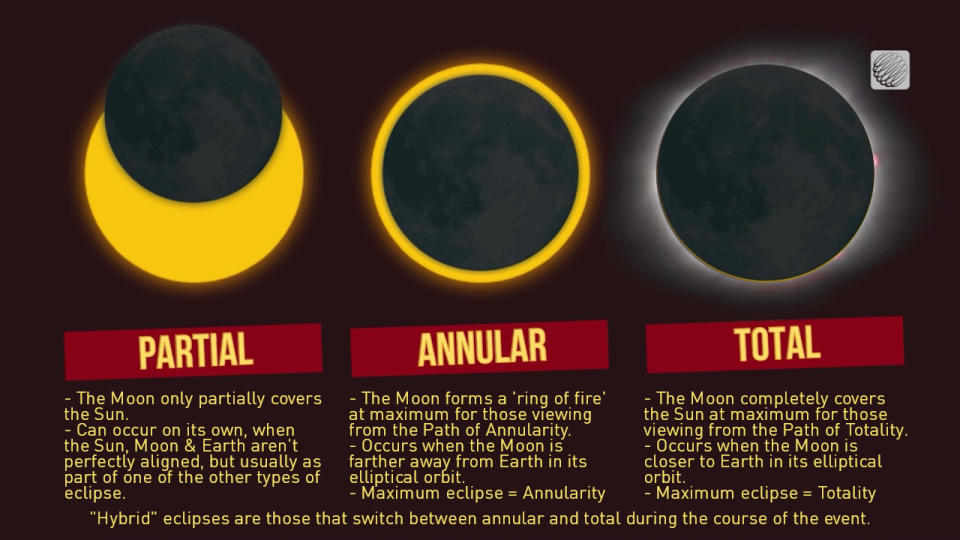The world’s 2nd photo voltaic eclipse of 2024 happens on Wednesday, and whereas it’s not straight noticeable in Canadian skies, there are nonetheless means to get pleasure from this magnificent costly positioning.
On October 2, 2024, we stay in for a reward. On that day, the Sun, the Moon, and the Earth will definitely all align in an apple-pie order to generate a photo voltaic eclipse.


An annular or ‘ring of fire’ photo voltaic eclipse reveals up proper right here, mounted over and listed under by unfold, orange coloured clouds. (NASA’s Goddard Space Flight Center)
Unlike the April 8 full photo voltaic eclipse, the place the Moon completely obstructed the Sun’s disk for a short period of time, this event will definitely be an annular, or ‘ring of fire’, eclipse. Also, whereas the April eclipse ignored North America, from Mexico to Atlantic Canada, this event will definitely be targeting the southerly hemisphere.
A fast partial photo voltaic eclipse may be seen from elements of Baja California and a little bit little bit of the southerly Mexico coast beforehand, nevertheless or else the eclipse will definitely present up all through the south Pacific Ocean and South America.


Even although we, proper right here in Canada, will definitely not have the flexibility to merely seek for and witness this eclipse for ourselves, we will nonetheless get pleasure from it.
Starting at 1:15 p.m. EDT on Wednesday, timeanddate.com will definitely be real-time streaming the annular photo voltaic eclipse with sights from Easter Island and elements of southerly Chile and Argentina.
Livestream: Watch the October 2 ring of fireside photo voltaic eclipse from the southerly hemisphere
Locations all through the South Pacific Ocean and South America which can be exterior the course of annularity all through this event will definitely see a partial photo voltaic eclipse.
LEARN MORE: Was that a solar flare? What did we see during the April 8 total solar eclipse?
Annular vs Total Eclipses
Why is that this eclipse so numerous from the one earlier this 12 months? It all pertains to the Moon’s setting precede because it passes in between the Earth and the Sun.
In April, the eclipse occurred when the Moon was nearer to Earth in its elliptical machine orbit. As such, it confirmed up massive enough in our skies to cowl the Sun completely. However, on Wednesday, the Moon will definitely be higher than 46,000 kilometres additional away from us than it received on April 8. As such, it should actually present up smaller sized to us than it did 6 months again, and consequently, it should simply have the flexibility to cowl nearly all of the Sun’s disk because it passes in between the Sun and Earth.


The April 8 New Moon and October 2 New Moon are revealed proper right here, alongside for distinction. With the Moon 359,781 kilometres away onApr 8, vs 406,515 kilometres onOct 2, it reveals up smaller sized in our skies at the moment, and subsequently can simply cowl nearly all of the Sun’s disk all through this eclipse. (NASA’s Scientific Visualization Studio/Scott Sutherland)
Meanwhile, the eclipse has really turned from the Northern Hemisphere to the Southern Hemisphere on account of the particular timing of the event in reference to the place the Moon stays in its orbit.
As the Moon circumnavigates Earth, the orbit it complies with is slanted, each relative to Earth’s equator and relative to Earth’s orbit across theSun The positioning of this tilt changes, additionally, tottering back and forth as we relocate with space and time.


Four sights of the Earth-Moon system reveal the lean of the Moon’s orbit. In the highest left construction, the Moon goes to a excessive satisfactory angle that its darkness overlooks Earth’s north publish (left), whereas at prime proper, the Moon is diminished enough that its darkness overlooks the south publish. No place on Earth sees a photo voltaic eclipse at these 2 occasions. In the diminished 2 buildings, the Moon is nearer to the ‘centre’ of its tilt, and subsequently its darkness brushes up all through the face of Earth all through theNew Moon (NASA’s Scientific Visualization Studio/Scott Sutherland)
As revealed over, many occasions, the Moon’s darkness goes by both over or listed under the world. Roughly two occasions a 12 months, nevertheless, the angles train much better and the darkness brushes up over the world’s floor space. Due to the distinctions within the timing, the darkness complies with a numerous course, and impacts a numerous element of the globe, every time.
In enhancement, when each one among these distinctions in vary, timing, and setting are built-in, we moreover wind up with 3 numerous types of photo voltaic eclipse.


While 2024 has each a whole and an annular photo voltaic eclipse, in response to NASA, we’re mosting more likely to want to attend until 2026 for the next ones. The Sun and Moon aren’t completely avoiding over 2025 for eclipses, nevertheless. Two are anticipated, one on March 29 and an extra on September 21, 2025. However, each of these will simply be partial photo voltaic eclipses.
The following annular photo voltaic eclipse takes place on February 17, 2026, with the course of annularity dying over japAntarctic The following full photo voltaic eclipse will definitely get on August 12, 2026, which will definitely present up from northeastern Greenland, Iceland, the north Atlantic Ocean, and elements of southerly Europe.


